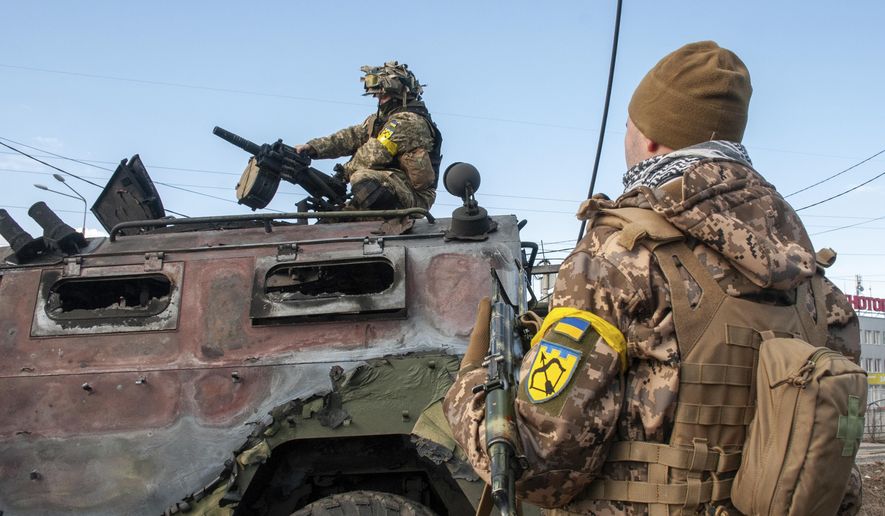The Russian army has “overextended” itself in Ukraine less than a week after invading the country, according to a top U.S. security analyst who says that if Moscow’s advance continues to stall, its forces are likely to be “picked apart” by Ukrainian fighters.
Russian forces are “in a precarious position if Ukraine becomes a protracted war,” Seth G. Jones, who heads the International Security Program at the Center for Strategic and International Studies, said in a series of statements gaining traction Monday on social media.
“Assuming 150,000 Russian soldiers in Ukraine & a population of 44 million, that is a force ratio of 3.4 soldiers per 1,000 people,” Mr. Jones wrote. “You can’t hold territory with those numbers.”
His assessment hung in the backdrop as Russian and Ukrainian officials met for talks Monday, after Moscow ran into unexpectedly stiff resistance when it unleashed the biggest land war in Europe since World War II.
With outgunned Ukrainian forces managing to slow the Russian advance and Western sanctions beginning to squeeze the Russian economy, the Kremlin has set nerves on edge across the world by raising the spectre of nuclear war. Russian President Vladimir Putin issued an order over the weekend putting Russia’s nuclear forces on high alert.
Mr. Jones, meanwhile, tweeted late Sunday that an analysis of past conflicts indicates Russia would need significantly more ground forces to conquer Ukraine — far more than the current 3.4 Russian soldiers per 1,000 Ukrainian citizens.
SEE ALSO: Poland takes in most refugees, leads global protests against Russian war on Ukraine
“The force ratios in successful operations are astronomically higher, such as 89.3 troops per 1,000 inhabitants in Germany (1945), 17.5 in Bosnia (1995), 9.8 in East Timor (2000), and 19.3 in Kosovo (2000),” he wrote. “High numbers of troops and police are critical to establish basic law & order. In fact, the number of Russian soldiers in Ukraine aren’t even enough to hold any major cities for long. They will be in serious danger of being picked apart by Ukrainian insurgents.”
For context, there were roughly 170,000 coalition troops in Iraq during years of insurgency in that country in the 2005-2008 timeframe, with about 150,000 of the troops being U.S. forces. By that math, the ratio was roughly 6.3 U.S. and allied forces per 1,000 Iraqis.
Former CIA senior officer Daniel Hoffman, who writes a regular opinion and analysis column for The Washington Times, offered a similar assessment as Mr. Jones over the weekend, asserting during an appearance on Fox News that Russia has “overstretched” its military in Ukraine.
“Vladimir Putin took a great risk here. He’s dealing with extended supply lines, which is having an impact — a negative impact on his troops’ ability to move,” Mr. Hoffman, a former CIA Moscow station chief said, according to a report by the Daily Mail.
• This article is based in part on wire service reports.
• Guy Taylor can be reached at gtaylor@washingtontimes.com.




Please read our comment policy before commenting.